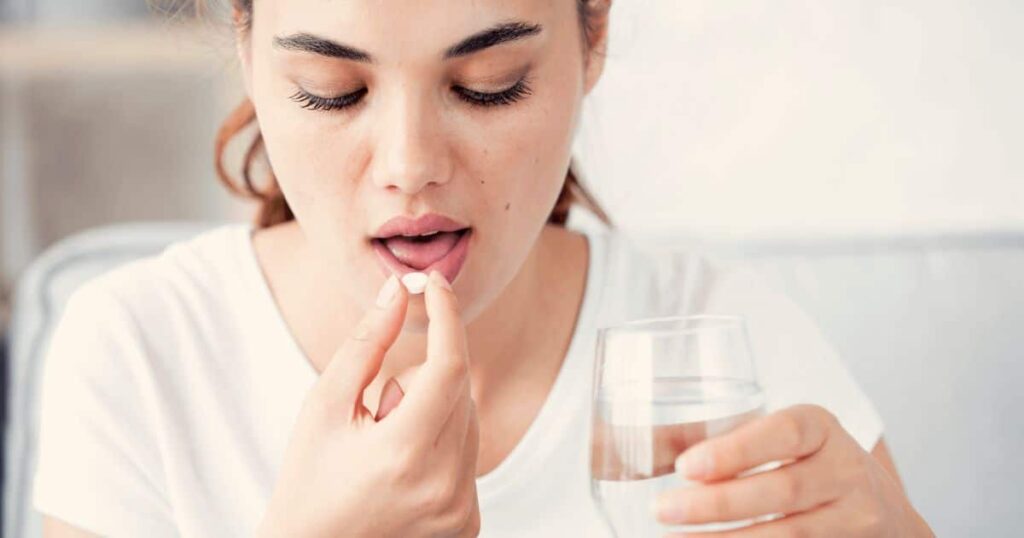The FDA has approved naltrexone as a treatment for alcohol and opioid use disorders (OUD). It was initially found in 1969, which is more than 50 years ago. However, it did not live up to its reputation until 1972, when Congress created the Drug Abuse Office and Treatment Act in the US to address substance abuse.
Low-dose naltrexone (LDN) can treat a wide range of additional disorders, according to a newer study. In this article, we go over what to avoid when taking low-dose naltrexone and how it functions.
What is used and what is not used with Naltrexone?
An antagonist of opioids is naltrexone. It functions by preventing the body’s endorphin and opioid receptors from functioning. Users consequently have fewer desires for drugs like alcohol and narcotics.
Studies reveal that those on naltrexone have a greater proportion of weeks without opioids than those on a placebo. Furthermore, up to 36% of naltrexone-using OUD patients report being completely opioid-free.
Comparably, naltrexone-treated alcohol-dependent patients are twice as likely to abstain from alcohol as compared to those on a placebo, according to clinical investigations.
Without causing narcotic-like symptoms or dependence, naltrexone is a pure opiate antagonist that has a license to treat individuals with opioid use disorder (OUD) or alcohol use disorder in conjunction with a behavior modification program under medical supervision.
Naltrexone blocks only euphoric activities. Hence, it cannot cause addiction or a “high.” Additionally, it might prevent the “high” feeling that could tempt you to drink. Alcohol or opiate addiction cannot be treated with naltrexone.
It can also be obtained with a prescription as a 50 mg oral tablet (generic name: Vivitrol) or as a long-acting intramuscular injection (brand name: Vivitrol).
The onset of naltrexone treatment occurs after you have overcome your opioid dependence. If you are still using narcotics (opioids), utilizing naltrexone for either an alcohol or opioid use disorder may cause withdrawal symptoms.
Before completing a minimum 7–14-day medically supervised opioid detox, you should not use naltrexone. By doing this, you’ll be able to prevent an opioid withdrawal that would necessitate hospitalization. Your detox period may need to be extended if you have been using a more long-acting opioid, like buprenorphine or methadone.
How should you take Naltrexone?

There are two ways most brands sell naltrexone:
- An oral pill of 50 mg
- An intramuscular (IM) injection of 380 mg
Despite the fact that the intramuscular injection is more painful, medical practitioners favor it for two reasons:
- Unlike oral tablets, which have short-lived effects, the effects of this medication remain for a month.
- It is the best choice for individuals who are unable to swallow the oral formulation. Thus, it will be effective in patients who do not take their daily pills as prescribed.
How Should I Take Naltrexone?
The dosage of naltrexone varies according to the formulation. For example, the oral tablet’s dosage can vary from 25 to 100 mg based on the patient’s health and past substance use. As long as patients do not have withdrawal symptoms, doctors will typically start the medication at a dose of 25 mg and raise it gradually. In contrast, medical professionals give the monthly IM injection at a set dosage of 380 mg.
How Does Low-Dose Naltrexone Work? What Is It?
Doses of naltrexone ranging from 1 to 5 mg are referred to as low-dosage naltrexone (LDN). LDN functions in three primary ways:
- By causing the brain to release “feel good” hormones
- By reducing the body’s inflammatory chemical production
- It also functions by controlling the body’s natural opioid synthesis
What Are The Uses of Low-Dose Naltrexone?
Because of its varied mode of action, medical practitioners employ LDN off-label for a variety of illnesses, with encouraging outcomes. These consist of:
- Many autoimmune diseases, including rheumatoid arthritis, multiple sclerosis, and Crohn’s disease
- Fibromyalgia
- Chronic fatigue syndrome
- Chronic pain
- Depression
- Post-traumatic stress disorder (PTSD)
- Cancer
With naltrexone, which opioids should I stay away from?
Naltrexone users should refrain from using ANY opioid, including heroin, morphine, codeine, oxycodone, tramadol, hydrocodone, and other illegal or prescribed opioids. They should also refrain from using illicit narcotics.
- Take alcohol.
- Use medications or other CNS depressants, such as tranquilizers or sedatives.
While using naltrexone, if you try to self-administer little dosages of opioids, you won’t feel any effect. Naltrexone inhibits the tranquil and euphoric effects of the drug misuse and keeps users from experiencing a “high.” To try to avoid naltrexone’s opioid-blocking effect, consuming high doses of any opioid, however, might result in overdose, coma, or even death. Taking any amount of opioids might be risky since you become more susceptible to lower dosages once you stop using them.
How can I take naltrexone if I miss a dose?
- As directed by your physician, take naltrexone at all specified times. When using naltrexone, your tolerance to opioids will drop.
- The opioid dosages you took before starting naltrexone treatment may now be fatal, resulting in death, cardiac collapse, and depression or cessation of breathing.
- If you skip a dosage, discontinue therapy, or reach the end of a dosing interval, you run the risk of taking a potentially lethal overdose.
Take the missing dosage of your oral naltrexone tablet as soon as you recall if you forget to take it. If your next planned dose is almost here, skip the missed one. Never take more medication to make up for a missing dosage.
Make another appointment with your doctor’s office as soon as possible if you miss your scheduled injection of naltrexone.
What happens if I naltrexone overdose?
Observe your physician’s advice in the letter. Over 50 mg of single oral naltrexone is associated with an increased risk of liver damage.
- Naltrexone does not result in a “high” or euphoric feeling. This substance is not usually abused to produce euphoria.
- Nevertheless, naltrexone overuse can cause serious liver damage or hepatic toxicity.
- If you have acute hepatitis or another severe liver illness, you should not use naltrexone. If you experience stomach pain, white stools, dark urine, or yellowing in the whites of your eyes, stop taking naltrexone and call your doctor right away.
Those who currently use opioids, have certain liver diseases, or have chronic pain and depend on opioids for pain management shouldn’t use naltrexone.
Never sell or give naltrexone to another person, especially if they are also an opioid user. Individuals who consume opioids will have withdrawal symptoms when using naltrexone.
Alcohol Dependence and the Use of Naltrexone
- Naltrexone prevents alcohol’s euphoric effects and intoxicating sensations, or the “buzz.”
- Naltrexone won’t stop you from getting drunk while drinking, but it does help those with alcohol use disorders cut back on their drinking to the point where they are motivated to continue treatment, stay away from relapses, and take their meds. Never try using naltrexone in order to drive or engage in other activities while intoxicated.
You shouldn’t be consuming alcohol when you begin naltrexone treatment in order to treat alcohol dependence. Before starting naltrexone treatment, you should be able to refrain from drinking in an outpatient situation (e.g., at home, at work, and in your community).
For both alcohol use disorder and opioid use disorder, naltrexone should be used in conjunction with other behavioral techniques, support groups, counseling, and other medical interventions as directed by your physician.
Naltrexone is useful for whom?
The usage of naltrexone is good for adults who are at least 18 years old. The FDA has not cleared its usage in patients under the age of 18. It is unknown whether using it on children younger than 18 is safe and effective.
Any medical practitioner with the necessary license to prescribe drugs may prescribe naltrexone. It is available as a long-acting injectable (Vivitrol) and a generic tablet. You can take the pills with or without food. Stomach side effects may be reduced by administering medication with food or after meals.
Naltrexone injections are administered exclusively by medical professionals. Your doctor will receive the injection at their clinic after it is mailed directly to them.
Never attempt to inject oneself with naltrexone. Serious injection site issues and skin reactions have been linked to injectable naltrexone. Following a naltrexone injection, if you have any of these side effects, contact your doctor immediately.
- Excruciating pain
- Blisters
- A hard feeling in the area
- An open wound
- Large swollen patches
- A dark scab
- Lumps
If you have renal illness, let your doctor know before beginning naltrexone therapy. When using naltrexone, you might need to exercise extra caution.
- Before beginning naltrexone medication, disclose any lung conditions, low blood platelets, or bleeding issues to your doctor.
- Depression may arise in certain patients using naltrexone. Before beginning naltrexone medication, disclose to your doctor any past history of depression, suicidal thoughts or attempts, or other mental health conditions. Inform others who are close to you, including your family, that you take naltrexone. In the event that they get depressed or exhibit symptoms of depression, they should contact a physician straight immediately.
- Until you know how it may impact you, avoid driving, operating heavy machinery, and engaging in any other risky activities. Driving or operating machinery may be affected by naltrexone’s sleepiness and dizziness. If you have any dizziness or other serious side effects from naltrexone, do not drive or engage in any other risky activities.
- If you have an allergy to any of the drug’s inactive components, vehicles, or other substances, you should not take naltrexone. Let your doctor know if you have ever experienced an adverse reaction to this medication or any other chemical.
Before beginning naltrexone medication, ensure your doctor knows of any current or upcoming pregnancy.
Are naloxone and naltrexone interchangeable?
No. Take caution not to mistake the names naltrexone and naloxone (examples of brand names: Evzio, Narcan). Naloxone is not used to treat alcohol or opioid use disorders. Instead, it is used in cases of emergency opioid overdose to reverse effects like slowed or halted breathing.
Things Not to Do When Taking Naltrexone at Low Doses
The risk of side effects is low with LDN. Furthermore, the majority of symptoms can be moderate and go away on their own. Even yet, less common side effects might sometimes have more severe consequences, such as an allergic reaction. To reduce the possibility of adverse effects after taking LDN, doctors advise against doing the following:
- Alcohol and Opioids
Before beginning naltrexone treatment, patients should abstain from alcohol and opioids for at least seven to ten days. When starting naltrexone while still using alcohol or narcotics, you may experience withdrawal symptoms. These consist of the following: anxiety, restlessness, fever, sweating, flu-like symptoms, hot or cold flushes, muscle aches and twitches, nausea, vomiting, diarrhea, and stomach discomfort.
- Various Pharmaceuticals
Users taking LDN must refrain from consuming alcohol or opioid-containing common drugs. Medications for cough and colds like promethazine or Phenergan; opioid analgesics like hydrocodone, oxycodone, codeine, fentanyl, and tramadol; and antidiarrheal medications are a few examples.
Final Verdict
If you take naltrexone together with any other prescription or illicit opiates, such as heroin, DO NOT use them. When naltrexone is taken alongside opiates, there is a higher chance of overdose, coma, and death.
If you are suffering from opioid withdrawal symptoms or are dependent on opioids, avoid using naltrexone. Before completing a minimum 7–14-day medically supervised opioid detox, you should not use naltrexone.
We have explained what to avoid when taking low-dose naltrexone. Before beginning naltrexone therapy, inform your doctor of any recent opioid use or history of opioid dependence in order to prevent a potentially dangerous opioid withdrawal that could necessitate hospitalization.
Frequently Asked Questions
Q. Which medical conditions make taking LDN risky?
Naltrexone is metabolized by the liver and excreted from the body by the kidney. Thus, utilizing LDN is not advised for those with liver or kidney issues. Furthermore, individuals who do not have these illnesses but experience yellow discoloration in their eyes should see a doctor very often.
Q. What Take Places if Alcohol Is Consumed While Taking Naltrexone?
Alcohol causes euphoric sensations that are suppressed by naltrexone. As a result, individuals may consume more alcohol to have the same result. Their chance of overdosing rises as a result.
Q. Is Naltrexone Overdose Possible?
Nope. Pharmacists created Naltrexone to ensure that patients could not overdose on it.


